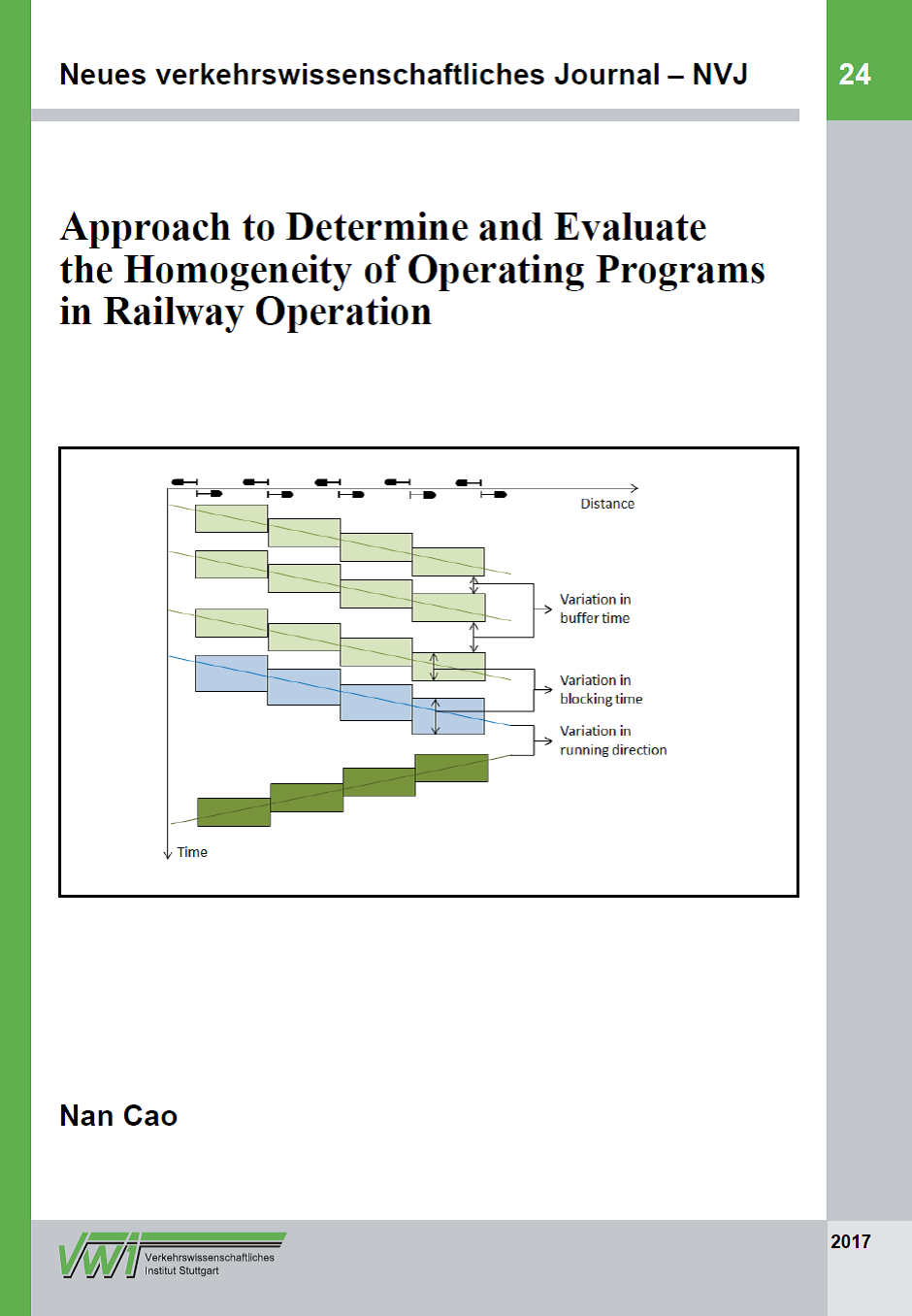
| VWI | ||||
| ||||
| VWI e.V. | ||||
| ||||
| VWI GmbH | ||||
| ||||
|
Neues Verkehrswissenschaftliches Journal des VWI - Ausgabe 24 |
|
Nan Cao: Approach to Determine and Evaluate the Homogeneity of Operating Programs in Railway Operation Based on Infrastructure Occupancy |
|
Inhalt An efficient utilization of existing infrastructure can be achieved with a more efficient operation. However, the occupancy of infrastructure has not been discussed in the existing definitions and evaluation methods of homogeneity. An extension of existing definitions is presented from the perspective of the infrastructure, which can be characterized by variations in blocking time, buffer time and running direction. The blocking time, buffer time and running direction describe the occupancy of train path on track sections based on the blocking time model. Accordingly, the homogeneity of operating programs is evaluated through three parameters, namely the homogeneity of blocking time (HBL), the homogeneity of buffer time (HBU) and the homogeneity of running direction (HRD). The overall homogeneity (OH) combined these three parameters to realize an integrity evaluation of homogeneity of operating programs. This new methodology can quantify the homogeneity of railway operations, not only for track sections but for an entire network, which contributes significantly to the efficient utilization of infrastructure. In addition, the interrelationship between homogeneity of operating programs and operation quality were investigated quantitatively for both each parameter of homogeneity and the overall homogeneity. The operation quality deteriorates with less homogeneous timetables, in which the variation in buffer time has a more significant influence. Finally, the influence of homogeneity of operating programs in capacity research is studied for different scenarios. The low traffic flow is more sensitive to the homogeneity of buffer time and the homogeneity of blocking time is more significant for high traffic flow. | |
